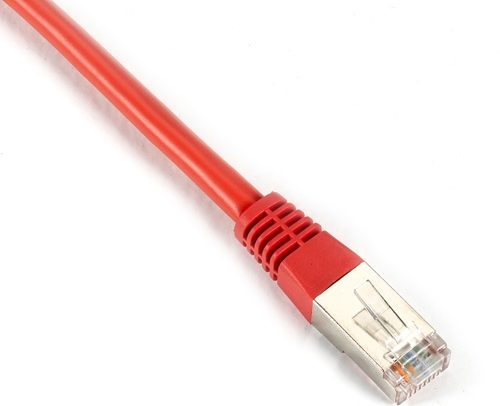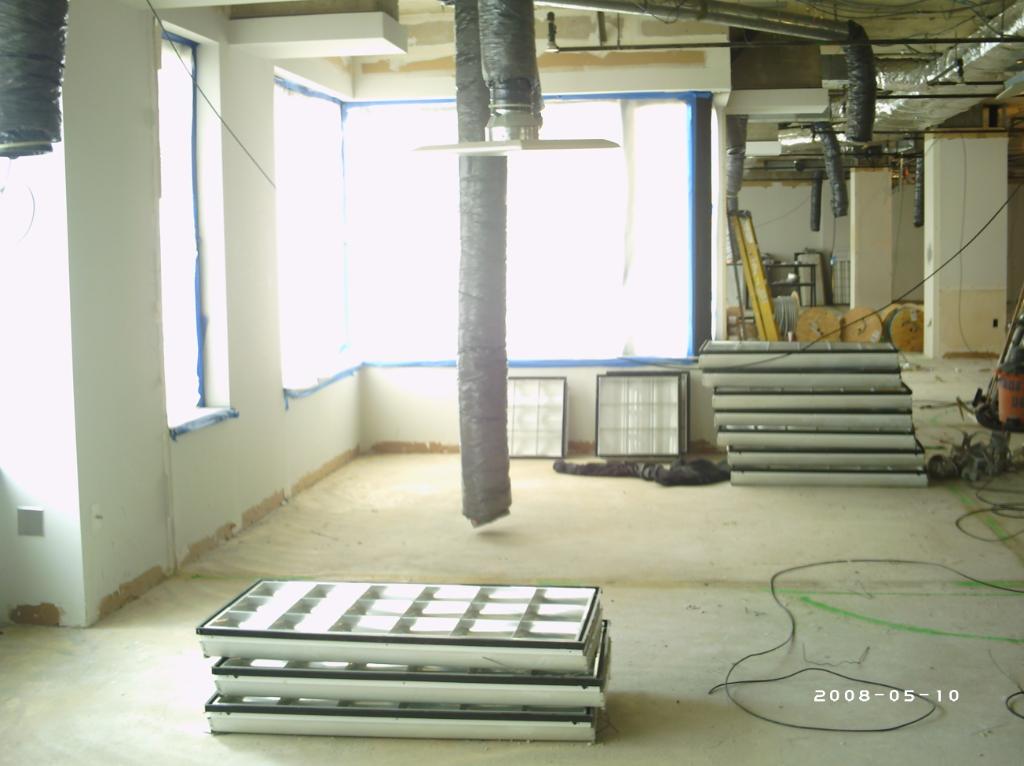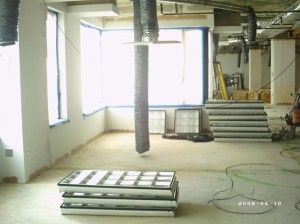


Structured Cabling Fundamentals for Businesses – Part 2

Structured Cabling Fundamentals for Businesses – Part 1

Planning the Cabling for Your New Location – Part 2
 As discussed in Part 1, moving often overwhelms staff, and cabling for data, power, communications, and security may not be prioritized adequately. Part 2 will discuss Health & Safety, Flexibility, Future Growth, and Structured Cabling. Consult with an experienced and expert cabling company prior to starting your project to get the best results.
As discussed in Part 1, moving often overwhelms staff, and cabling for data, power, communications, and security may not be prioritized adequately. Part 2 will discuss Health & Safety, Flexibility, Future Growth, and Structured Cabling. Consult with an experienced and expert cabling company prior to starting your project to get the best results.
Health & Safety
Consideration should be given to the health and safety of both employees and staff when planning the cabling at your new facility. Wiring that provides connections to equipment and telecommunications and power companies should not endanger the welfare of people by blocking emergency exits, ventilation ducts, and cooling systems.
Ensure that regulatory compliance for securing certain types of sensitive or personal data will be met. This will require locating data storage, servers, and equipment processing transactions properly. Their positions should be considered during the mapping process.
Flexibility
Market conditions can become very fluid, and perhaps only a brief time after moving into a new location will an organization have to make changes in its cabling. Well-designed structured cabling will ensure flexibility that allows a company to make additions and revisions in the most efficient and fastest manner possible to reallocate resources.
Future Growth
The cabling of an organization should give allowance for future expansion of its IT infrastructure. The growth of its business may require the company to seek greater bandwidth, increased communication channels, more electrical power, and additional space. Although the future of a business is often very hard to predict, it is still possible to make projections given the current market and its prospects in the coming years.
Structured Cabling
Having your data, communications, and power cabling installed by several different contractors will work against a properly configured cabling system. This haphazard approach may also result in higher management and maintenance costs. Governed by proven industry standards, a structured cabling system will provide a company an integrated IT infrastructure that allows for ease of maintenance, flexibility, and expansion.
Progressive Office Cabling
Founded in 1986, Progressive Office’s success has been a direct result of years of commitment to seeking solutions on behalf of our clients in the Washington, D.C. and New York City areas. Efficiently working together, Progressive teams get cabling installed and operating as fast as possible while minimizing disruption and downtime. Call our toll free number (800) 614-4560 today.

Essential Facts About Cabling System
 Your office cabling system is costly and complicated investment. It's also a commitment to an office design and structure that is not easy to modify. If you add more workstations later, new cabling might be needed.
Your office cabling system is costly and complicated investment. It's also a commitment to an office design and structure that is not easy to modify. If you add more workstations later, new cabling might be needed.
Most offices have a structured cabling topology that hardwires the cables from wallplate to patch panel. With this system, modifications are less likely because the initial installaiont includes a planning process that should anticipate some expansion. By pre-wiring potential locations in an existing or newly-constructed building, future moves, additions or alterations are avoided. You can just transfer patched cables in the wiring closet. Also, it is critical to number the wallplates to match the corresponding patch panel number. This will make it much easier to relocate a workstation or to troubleshoot a connectivity problem.
There are several sub-systems to consider:
- The Demark refers to the point where the Internet Service Provider's (ISP) data line comes to an end and hooks up with the cabling in the building.
- The equipment room serves as storage for all apparatus and wiring integration points.
- Backbone cabling are high-speed cables (typically Cat6 or fiber) that connect various floors or wall closets.
- The horizontal cabling for links up the network space to individual wallplates. These are done through conduits and ceiling spaces on every level.
- The telecommunications enclosures are wall or floor mounted cages that hold the network equipment; primarily the patch panels ands switches but also sometimes the server and Uninterruptible Power Supplies (UPS) too.
Installation and design of structured cabling is regulated by standards that identify the following:
- Network data switches
- Offices layout for voice & data communications for Cat5e or Cat6 cable
- Fiber Optic cables for backbones
- Modular connectors at the wallplate
These components will guide the layout of cables in order to fulfill the data access requirements of your office. All of the cables start at the patch panel on a mounted rack (about 19 inches wide) in the wall closet. From there, they traverse through the drop ceiling and down the walls to individual wallplates. Quite often a wallplate will host 2 or more connections. At the wallplate a short patch cable, usually 7 to 14 feet in length wil connect the computer, phone, printer or other networked device.
All cabling standards require that all of the eight conductors in Cat5, Cat5e and Cat6 cables are inter-connected in a precise color-coded pattern. The network cable connects each device but some devices can share a single cable. This is true for VoIP phones. Most VoIP phones have a jack for the network cable and then a jack on the phone for connecting the computer. This pass-thru enables the two devices to share one connection.

Benefits of Copper Cabling Solutions
 The conventional process of copper cabling has been used for several years and is still preferred by many network cable providers and end-users. Companies like Progressive Office Cabling offer a complete range of cabling solutions in Cat5, Cat5e, Cat6a and Cat6, providing clients with high-quality cable as well as connectivity components. Progressive Office Cabling makes use of highly effective cable management systems and well-trained technicians for installation jobs. It also employs a web-based online project management system to guarantee proper implementation and monitoring of any project.
The conventional process of copper cabling has been used for several years and is still preferred by many network cable providers and end-users. Companies like Progressive Office Cabling offer a complete range of cabling solutions in Cat5, Cat5e, Cat6a and Cat6, providing clients with high-quality cable as well as connectivity components. Progressive Office Cabling makes use of highly effective cable management systems and well-trained technicians for installation jobs. It also employs a web-based online project management system to guarantee proper implementation and monitoring of any project.
How Does Copper Cabling Work?
Installation technicians have to follow specific policies and standards, particularly when it comes to building structure concerns. There are several steps to follow with regard to installation. First, the cable should have the appropriate covering or insulation, which is normally made of PVC, Plenum, Ultra-Violet, or mold-resistant varieties. The cable is cut according to the needed length, and outer covers are removed before connectors are attached. Use the appropriate stripping tools for this purpose. Cables should be mounted as orderly as possible.
There are instances when installers have to use ladder trays and J-hooks, which are made for network cabling, or shoot nails into concrete ceilings using a tool that literally propels nails like bullets into the concrete surfaces. Network cables must be installed away from electric power lines, fluorescent lamps and industrial machines; the risk of electrical coupling can increase dependent on proximity and voltage factors.
Different Benefits
Copper cabling has multiple benefits and is the most effective conductor out there. Copper cables are flexible, which is especially advantageous if you are using electrical wires. It is necessary to bend the wire during installation, so you need something durable that will not easily break after a lot of twisting. Copper does not easily melt, so even if a sudden surge of current or overload takes place, there is no risk of burning or melting. At the same time, copper is not difficult to work on. The majority of electricians opt for copper wires because they can be stripped easily or pulled through rigid spots.
With regard to structured copper cabling, there is the Power over Ethernet benefit. This means that it is possible to run power through devices such as Wireless Access Points, surveillance cameras, and power phones. There is an emergency power supply that continues to power mission-critical devices even if electrical power conks out. Copper cabling supports modern technologies and facilitates the convergence of different applications. Hence, it is important that copper cabling is optimized for your requirements. That is why you should make sure to get the services only of experienced and trustworthy providers in the industry. Choose the provider that ensures customer satisfaction and warranty after installation.

Should you upgrade your Cat5 cable to Cat6 or Cat6a?
 A business decision is approaching. Most companies have Cat5/5e cable in their offices. And it has served well in providing reliable data access to servers, peripherals and the Internet. Cat5/5e runs at speeds up to 1gb (also known as 1000Base-T). Cat6 runs at 10gb but has sorter runs. Whereas Cat5 can have cable lengths of up to 100m, Cat6 maxes out at 55m. This number falls to 37m in a hostile environment. To achieve full 100m cable lengths maximum while minimizing the risks of crosstalk, it is advisable to install Cat6a cable.
A business decision is approaching. Most companies have Cat5/5e cable in their offices. And it has served well in providing reliable data access to servers, peripherals and the Internet. Cat5/5e runs at speeds up to 1gb (also known as 1000Base-T). Cat6 runs at 10gb but has sorter runs. Whereas Cat5 can have cable lengths of up to 100m, Cat6 maxes out at 55m. This number falls to 37m in a hostile environment. To achieve full 100m cable lengths maximum while minimizing the risks of crosstalk, it is advisable to install Cat6a cable.Ultimately, this decision is about costs vs. gains. And before a decision can be made, it is critically important to determine if your existing cable infrastructure is running into bottlenecks that cause traffic slowdowns at the desktop for your users. Internet might only needs about 5 - 25mb of bandwidth. But if your office has a lot of workstations and/or a group of users that are utilizing data-intensive publishing or graphic applications, you might need more speed. We have sophisticated network monitoring tools that can determine the traffic across your network. If we determine that you are using all available bandwidth, than your decision will be based on solid information.
Cat6 and Cat6a will boost your network speeds to 10gb/sec. Can you afford to upgrade to Cat6/6a? If the costs justify the expense, please contact us. We will send out one of our top network cabling technicians to analyze your network and determine if this upgrade option is a good idea for your office. And if it is, we will follow up with a proposal all at no cost to your firm.
